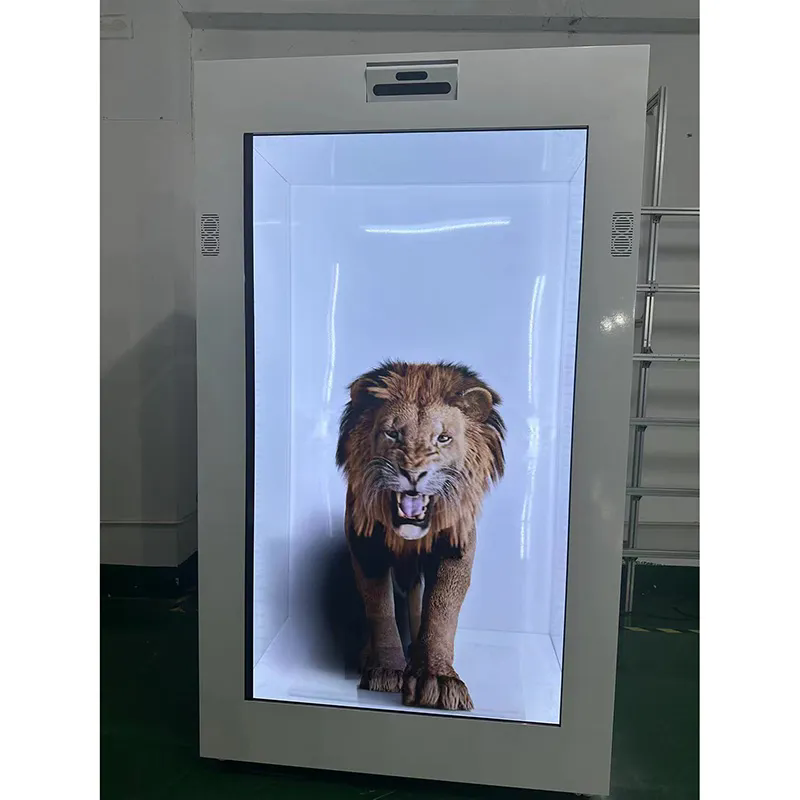The Future is Clear: Exploring the Potential of Transparent OLED Displays
2024-09-04
As technology advances, the boundaries between the physical and digital worlds continue to blur. One of the most exciting developments in display technology is the transparent OLED display. Offering a window into the future of interactive screens, transparent OLED displays combine high-quality imaging with a see-through design. In this blog, we'll delve into what transparent OLED displays are, their key features, benefits, and potential applications.
What is a Transparent OLED Display?
A transparent OLED (Organic Light Emitting Diode) display is a type of screen technology that allows for both high-resolution visuals and transparency. Unlike traditional OLED displays, which are opaque, transparent OLED displays use a special design to allow light to pass through the screen. This technology enables users to see content on the display while simultaneously viewing objects behind it.
Key Features of Transparent OLED Displays
1. High Transparency
The most defining feature of transparent OLED displays is their ability to be nearly see-through. This transparency allows for a unique blend of digital and physical worlds, making it possible to overlay digital information onto real-world objects.
2. Vivid Color and Contrast
Despite their transparent nature, OLED displays are known for their exceptional color accuracy and contrast ratios. Each pixel emits its own light, resulting in deep blacks and vibrant colors, which are preserved even in a transparent display.
3. Flexibility
Transparent OLED displays can be made flexible, allowing for innovative designs and applications. This flexibility enables the creation of curved or even foldable screens that maintain transparency.
4. Wide Viewing Angles
OLED technology inherently provides wide viewing angles with minimal color distortion. This feature ensures that the display content remains clear and consistent from various perspectives.
5. Low Power Consumption
Compared to traditional LCD screens, OLED displays generally consume less power, especially when displaying darker images. This power efficiency is beneficial in applications where energy consumption is a concern.
Benefits of Transparent OLED Displays
1. Enhanced User Experience
Transparent OLED displays offer a new level of interactivity by blending digital information with the physical world. This integration enhances user experiences in various applications, from advertising to augmented reality.
2. Innovative Design Possibilities
The transparency of OLED displays opens up new design possibilities. Architects and designers can create eye-catching displays that do not obstruct views, such as storefront windows with integrated advertising or informational displays.
3. Increased Engagement
In retail and advertising, transparent OLED displays can attract and engage customers by overlaying dynamic content on store windows. This approach can enhance brand visibility and drive consumer interest.
4. Improved Functionality
In applications such as automotive or aviation displays, transparent OLED technology can provide real-time information without obstructing the driver’s or pilot’s view. This functionality enhances safety and convenience.
5. Space Efficiency
Transparent OLED displays can be used in spaces where traditional displays might be too bulky or obtrusive. Their sleek and minimalistic design helps conserve space while providing high-quality visuals.
Applications of Transparent OLED Displays
1. Retail and Advertising
Transparent OLED displays can transform retail environments by providing eye-catching advertisements and product information directly on storefront windows. This technology can captivate passersby and drive traffic into stores.
2. Automotive Industry
In the automotive sector, transparent OLED displays can be integrated into windshields or dashboards to provide real-time driving information and navigation aids without obstructing the driver’s view.
3. Architecture and Design
Architects and designers can use transparent OLED displays in building facades or interior glass partitions to create interactive and visually striking elements. These displays can serve both functional and aesthetic purposes.
4. Augmented Reality
Transparent OLED displays can enhance augmented reality (AR) experiences by overlaying digital information onto the real world. This application can be particularly useful in fields such as education, training, and entertainment.
5. Consumer Electronics
Transparent OLED technology has potential applications in consumer electronics, such as transparent smartphones or smart home devices. These innovations could lead to new ways of interacting with digital content in everyday life.
Challenges and Considerations
While transparent OLED displays offer numerous advantages, there are some challenges to consider:
- Cost: The technology behind transparent OLED displays can be expensive, which may limit its adoption in some applications.
- Brightness: Achieving optimal brightness levels in transparent displays can be challenging, especially when used in bright environments.
- Durability: Ensuring the durability of transparent OLED displays, especially in flexible or curved forms, requires careful engineering and design.
Conclusion
Transparent OLED displays represent a significant leap forward in display technology, combining the best of high-quality imaging with transparency. Their ability to blend digital content with the physical world opens up exciting possibilities for innovative designs and applications. From retail and advertising to automotive and augmented reality, transparent OLED displays have the potential to revolutionize how we interact with information and technology. As the technology continues to evolve, we can look forward to even more creative and practical uses for transparent OLED displays in the future. Embrace the future of clear, interactive displays and explore the endless possibilities they offer.



